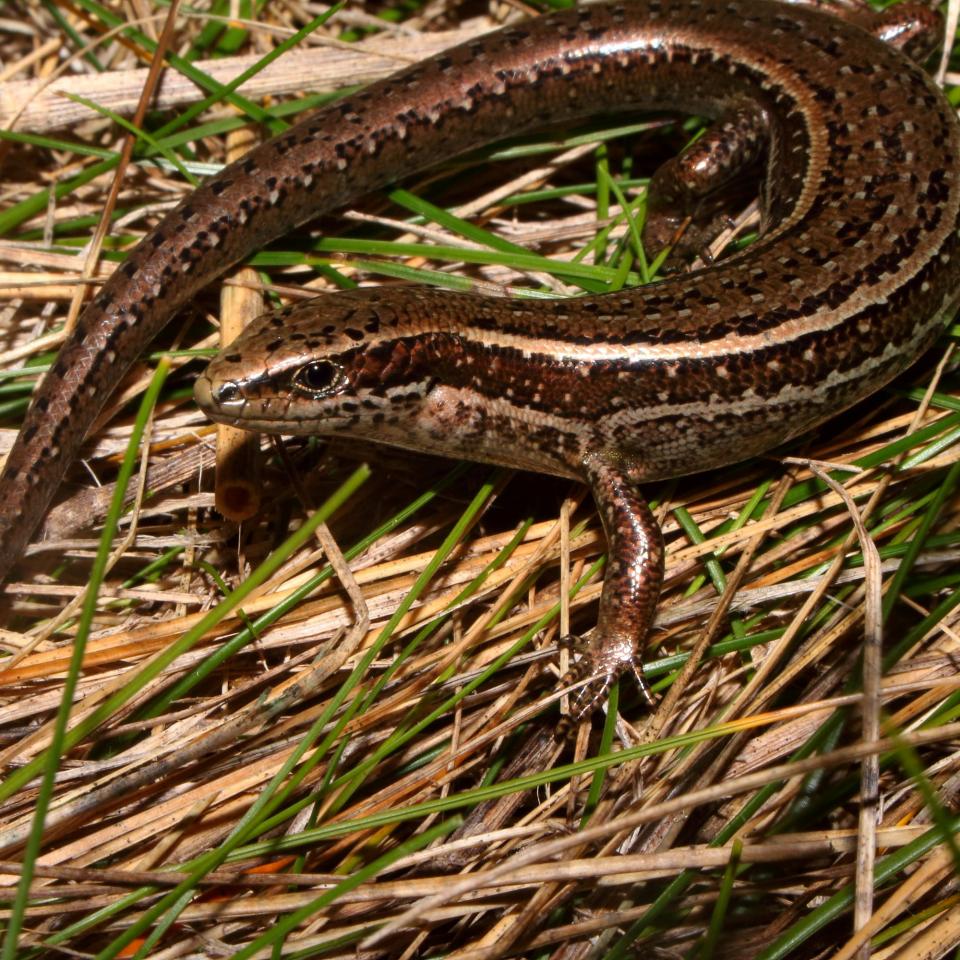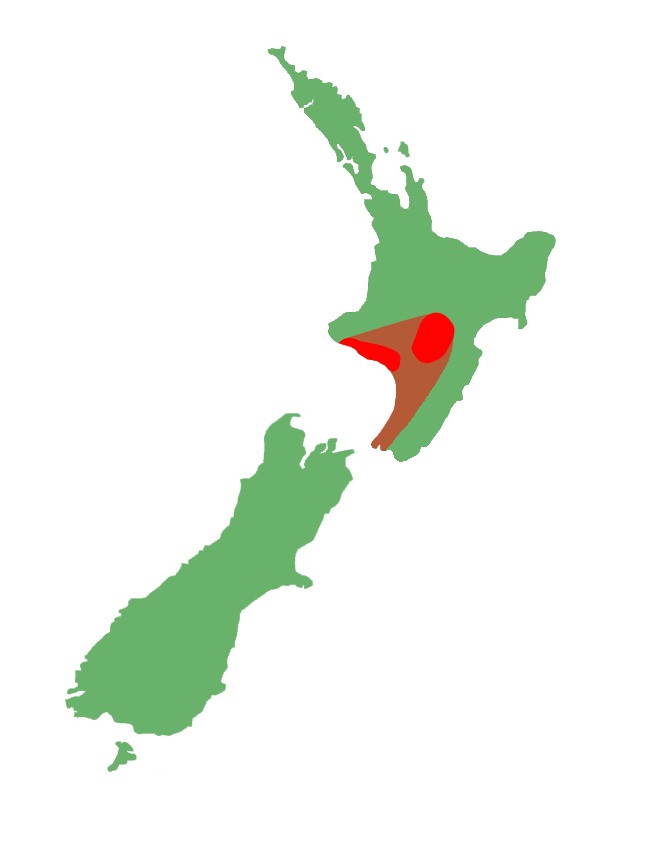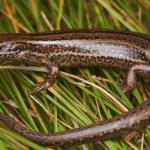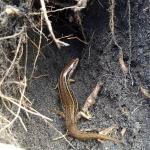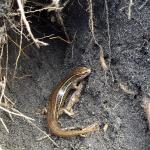- Home
- Herpetofauna Index
- Native
- Oligosoma Aff. Infrapunctatum "southern North Island"
Oligosoma aff. infrapunctatum "southern North Island"
Kupe skink
Oligosoma aff. infrapunctatum "southern North Island"
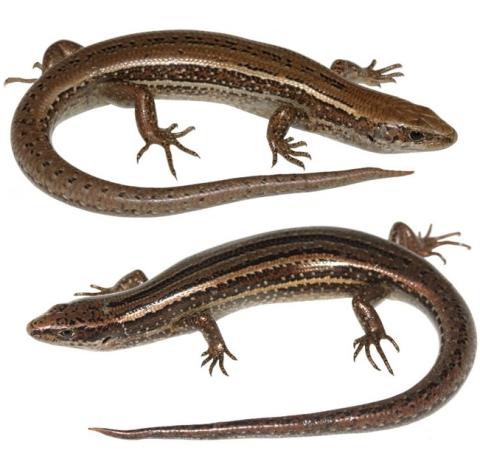
Length: SVL up to 80mm, with the tail being longer than the body length
Weight: At least up to 14 grams.
Description
A beautiful and robust, medium-sized skink belonging to the speckled skink complex.
Kupe skinks are light to mid-brown dorsally with black and cream speckling, they often exhibit a dark dorsal stripe, but this may be absent or broken in some individuals. Dark brown lateral stripes with interior cream flecking are present, these are directly bordered by yellowy-brown or cream-coloured dorsolateral stripes, with the lower stripe breaking up into brown and cream blotching towards the lower surfaces. The lower surfaces are cream to pale yellow with dark brown to black flecking.
Kupe skinks are distinctively patterned and only likely to be confused with the often much smaller northern grass skink (Oligosoma polychroma) with which it co-occurs. Young animals may be confused, but in general Kupe skinks are much larger / more robust, and exhibit more distinct speckling on the dorsal surfaces.
Life expectancy
Unknown.
Distribution
Occurs in disjunct populations in the lower North Island, from southern Taranaki and the Whanganui coast in the west, eastwards to the Kaimanawa Ranges.
Populations of speckled skinks formerly known from the southern Wairarapa were previously regarded as this species. However, current knowledge suggests that populations east of the Tararua and Ruahine ranges are likely to be Hawke's Bay skinks (Oligosoma auroraense), with Kupe skinks restricted to the west of these mountain ranges (Nick Harker pers. comm., 2024).
Ecology and habitat
Kupe skinks are diurnal and strongly heliothermic. They will sun-bask, but often cryptically near cover.
They occur in a range of habitats including dune systems, shrubland, scrub, grassland, open forest, and boulderfields. When not active, foraging or basking, Kupe skinks take refuge on the ground under rocks, logs, driftwood, or in dense vegetation.
Social structure
Little is known about the social structure of Kupe skinks. Though they are considered to be solitary, they can be occur at high density.
Breeding biology
Largely unknown, but they may be similar to other members of the speckled skink complex e.g. gravid during spring-summer, and give birth from December to March. Populations at higher elevations may breed biennially.
Diet
The diet of Kupe skinks includes a wide range of invertebrates, and the berries / fruit of native species.
Disease
Unknown
Conservation strategy
Kupe skinks are regarded as Threatened - Nationally Critical. Although geographically widespread many populations are at fairly low densities due to the impacts of habitat modification, and predation from mammalian pest species. The Wairarapa populations may be locally extinct as they have not been recorded there since the 1970's.
Interesting notes
Kupe skinks are members of the speckled skink cryptic species complex - a group of related taxa with similar morphology that were previously regarded as one highly variable species (Oligosoma infrapunctatum).
References
Hitchmough, R.A., Barr, B., Lettink, M., Monks, J., Reardon, J., Tocher, M., van Winkel, D., Rolfe, J. (2016). Conservation status of New Zealand reptiles, 2015; New Zealand threat classification series 17. Wellington: New Zealand Department of Conservation.
van Winkel, D., Baling, M. & Hitchmough, R. (2018). Reptiles and Amphibians of New Zealand: A Field Guide. Auckland: Auckland University Press, 376 pp.

